Air Raid to Al-Waleed (21)
The Story of Demolishing Fighters and the Equipment in Al-Waleed Triple Military Bases Known as H-3
2016-5-29
Air Raid to Al-Waleed (H-3)
The Story of Demolishing Fighters and the Equipment in Al-Waleed Triple Military Bases Known as H-3
By: Brigadier General Ahmad Mehrnia
Tehran, Sooreh Mehr Publications Company
2010 (Persian Version)
Translated by: Zahra Hosseinian
One of air cover missions of tankers from Tabriz was assigned to Capt. Seyyed Ismail Mousavi and me (the author), during which an interesting incident occurred as follow:
I was notified that should go to a mission along with Mousavi. I did related tasks very quickly and joined him for flight brief. He stressed on the importance of flight and that the absolute radio silence all the time should be observed. Until then, radio silence was not taken account, because Tabriz base was far from enemy’s region and usually it was trying to less talk when entering the enemy’s territory.
Because it was supposed the flight to be done in complete silence, the leader for the first time noted to several standard and non-standard signals and symbols for flight safety. He pointed out that, for example, shaking the tail means turning back by 180-degree rotation; if I waved the wing twice, saying that so and so, and finally he said again an important mission is on the verge of carrying out, which I’m unaware of its content. We will be in radar at the South Lake Uremia and ready for reaction mission.
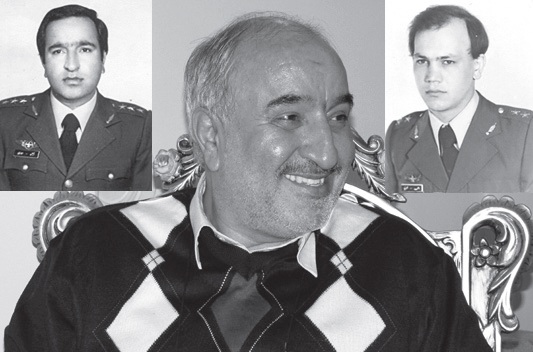
Second Brigadier General Seyyed Ismail Mousavi (2008); Top Left: Mousavi (Captain Rank); Top right: Second Brigadier General Ahmad Mehrnia (First lieutenant Rank)
As always, the numbers of aircrafts were determined after brief. We wrote and signed the log books of battalion. Then we went to the equipment room and took flight equipment, including pilot harness [1], and headed hangars. Our aircraft was in a separated hangar. Hearing the sound of their aircraft engines and mechanics’ signaling, I should left hangar and join leader. However, with special passion I came out of hardened shelter of aircraft and saw the leader waiting for me in the up runway. Pre-checks of flight were carried out and we both started taxiing on the runway. Seeing the green light signal from tower, we took off and headed to mission region. During flight in holding area, I noticed that we are far from the predetermined location. There was nothing to do. I was sure the leader knows better and certainly some changes have been occurred that I'm unaware of them. But still I waited the leader use those agreed signals. But there were no signals. I would see suddenly he was turning back, so I would follow him and turn back. Sometimes, as I was waiting for a signal, with the slightest shaking of leader’s aircraft I would think that he have certainly signaled and I should do something; so, I would think and do something, but would see no reaction of him. After all, the flight was done contrary to brief that put pressure on me, because I didn’t know the cause of problem. Apparently the leader had been also worried about my unexpected movements and couldn’t speak.
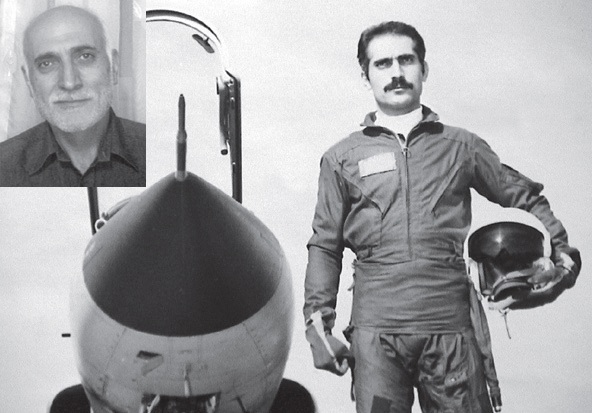
Brigadier General Ehsan Fazeli with the rank of First Lieutenant; new image 2008
Low fuel ended our mission and we gave our place to the other team and returned to base. After parking the aircrafts in the relevant hangars, a car was picked me up that must pick up the leader before me. As soon as seeing the car, I noticed that Capt. Ehsan Fazeli was in it. I was surprised. I asked: "So… Where is Sayyed?" He said, "What do you mean?" I said, "But he was the leader of our flight. You must pick him up first." He said, "I was the leader; Capt. Mousavi’s aircraft broke down when he turned it on, and I was ordered to take his place." Then I just realized what was going on. Ehsan Fazeli asked about the reason of those anomalies in the flight; I told him and the story ended, and even he said that there is no need for debriefing. But this memory stuck in my mind and Seyyed Ismail accomplished his mission along with another team."
The other pilots, who provided air cover for tankers in the form of two F-5 aircrafts, we can name:
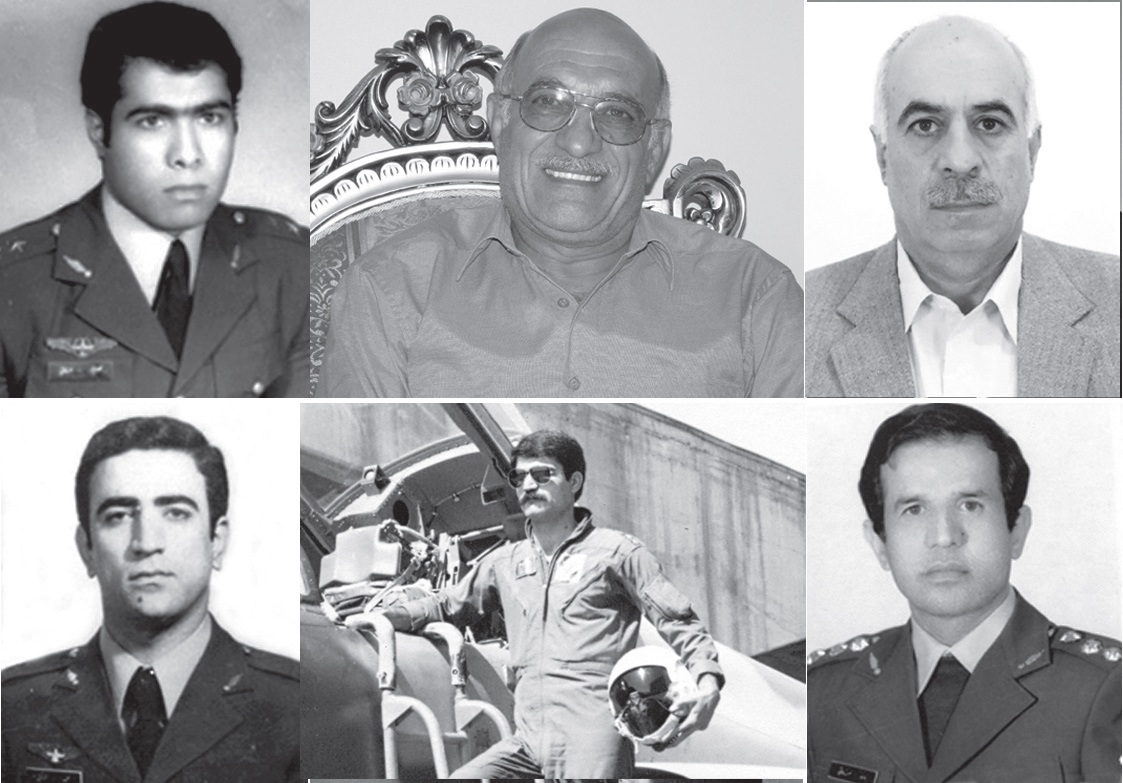
Top Center: Second Brigadier General Khosrow Abbasian (2008); Top right: Second Brigadier General Reza Zamanipour; Top left: Brigadier General Nasrallah Erfani with First Lieutenant Rank; Bottom right: Colonel Davoud Sadeghi; Bottom left: Shahid Hamid QazaAani; and Bottom center: first Lieutenant Hussein Boushbeesheh
1. First Lt. Khosrow Abbasian and second Lt. Hamid QazaAani [2] (in the rear cabin) in F-5F (two cabins) / First Lt. Davoud Sadeghi in F-5E.
2. Capt. Ataallah Mohebi and Second Lt. Hassan Husseinzadeh [3] in F-5F / First Lt. Yousef Samandarian in F-5E
3. Capt. Nasrallah Erfani / Capt. Ali Najafi Mahyari in F-5E
4. Capt. Reza Zamanipour / First Lt. Hussein Boushbeesheh in F-5E
5. Capt. Seyyed Ismail Mousavi / First Lt. Mohammad Reza Sartipi in F-5E
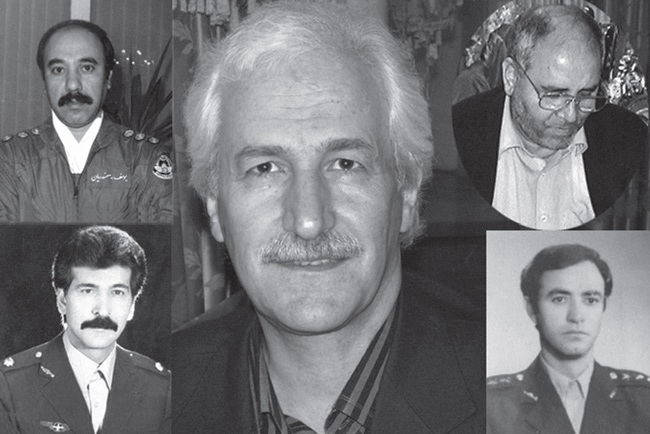
Center: Second Brigadier General Ataallah Mohebi (2008), Top right: Col. Ali Najafi Mahyari (2007), bottom right: Capt. Shahid Hassan Hosseinzadeh, Top left: Liberated prisoner, Col. Yousef Samandarian, bottom left: Col. Sartipi (Major)
The mission of F-5 is close air combat with the enemy’s flying. Since it is necessary to detect, identify and target the enemy from the farthest point for dealing with threats, fighters which has such a capacity should be taken advantage. For this reason, a number of F-4 fighters flew in the Hamedan-Tabriz route and around Hamedan base to combat under ten miles distance. Some F-14 (Tomcat) also had been intended for long-distance interception.
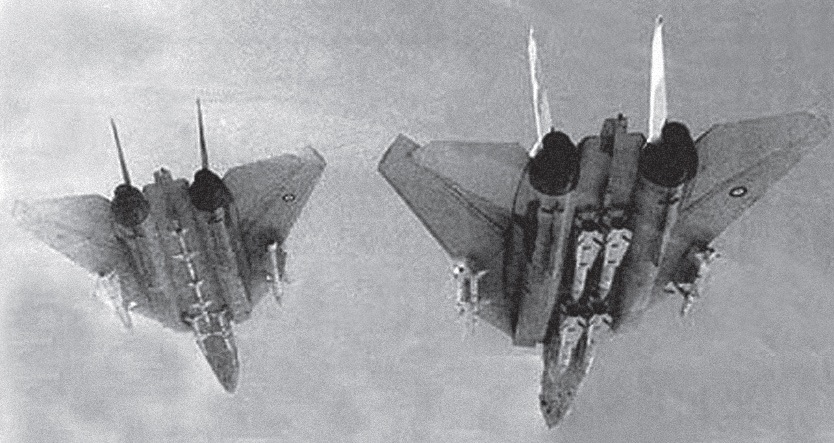
F-14 aircraft or Tomcat with variety of air-to-air missiles
At the time, with unique facilities and functionalities, F-14 fighters were one of the best aircrafts in the world which with their radar and unparalleled missiles, "Phoenix" [4], could detect enemy aircrafts from a distance of over 300 km and hit them from around 100 km (in different circumstances, these distances vary in terms of altitude, angle of attack, the position of insider with enemy, and other factors). Striking from above the target (which minimizes the possible escaping of target aircraft), and simultaneous combating with six attacker aircrafts are unique features of Phoenix missiles. Tomcat also is equipped with AIM-7 short-range missiles and AIM-9 thermal missiles with 20-mm machine-gun. Thus, at the beginning of the war, the presence of these fighters was accounted a nightmare for enemy pilots!
With air cover mission, the "Ezhdeha-5" reference, and piloted by Capt. Abulfazl Mehreganfar and Lt. Parviz Moradi, the first Tomcat left the Isfahan air base at the 6 am sharp, and after five hours and fifty-five minutes flight landed in the base of departure at 11:55 am.
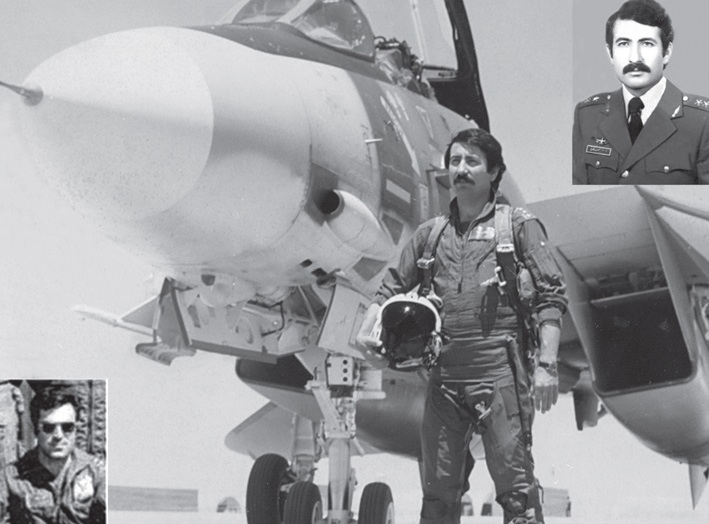
Second Brigadier General Pilot Abulfazl Mehreganfar (first Lieutenant) and Parviz Moradi
The second sortie, piloted by Capt. Abbas Babaei [5] in the front cabin of Maj. Shahram Rostami, began at 6:10 am with "Ezhdeha-6" reference, and after nine hours and fifteen minutes of patrolling finished at 15:25 pm.
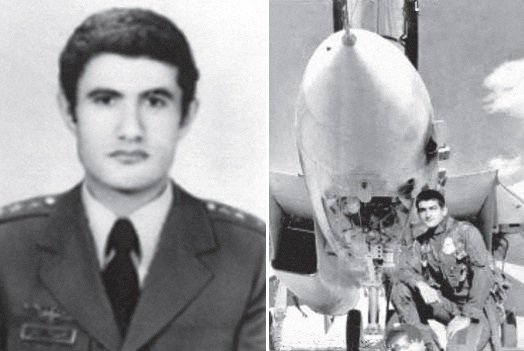
Major General Shahid Abbas Babaei and Brigadier General Shahram Rostami (captain)
At 9:20 sharp, the third flight piloted by Capt. Saeed Aghassibeigi and Maj. Mohammad Hashem Alagha [6] in the rear cabin and with "Delijan" reference, protected tankers and other flights for six hours and a half around the Lake Uremia. In another flight with the "Ezhdeh-7" reference, Maj. Mohammad Reza Ataee and Hassan Sedqi in the rear cabin took off at 10:50 am and landed at 16:35 pm. In addition to these four sorties, nine more guarded across the country and watched out for any single possible attack or preemptive move of Iraqi Air Force, from last night until the midnight of April 24th.
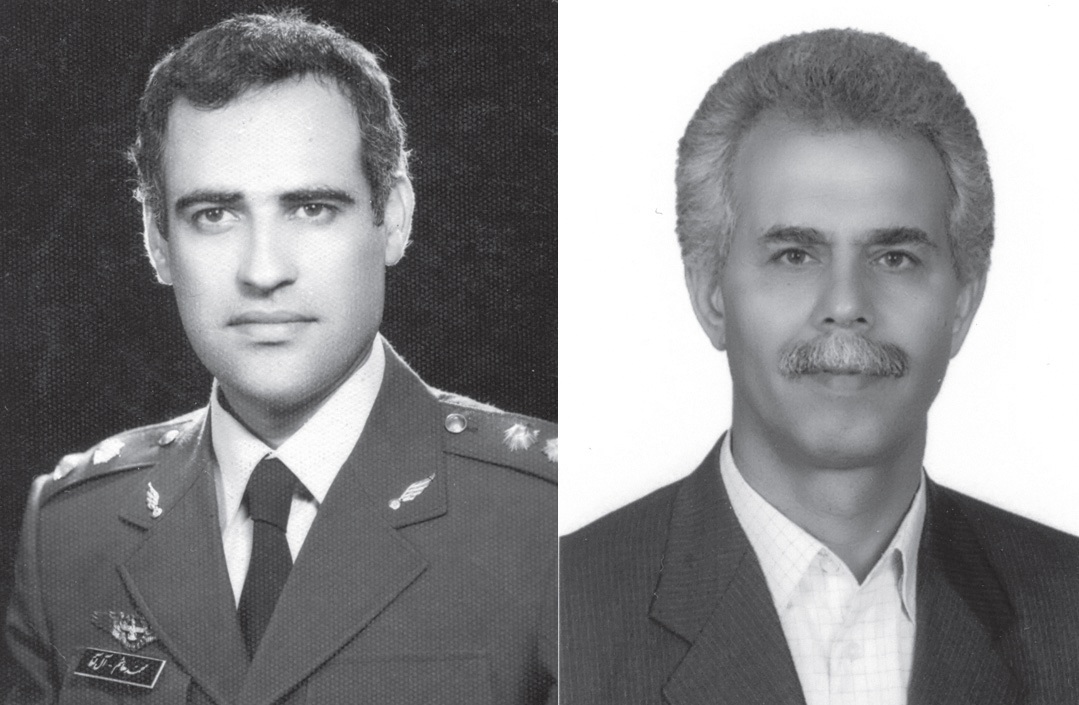
Brigadier General Saeed Aghassibeigi and Major General Shahid Mohammad Hashem Alagha
About the long air cover flight I asked Amir Brigadier General Pilot Shahram Rostami, who replied with courtesy:
"For defending the privacy of Islamic land and the honor of our soldiering, we had to maintain our preparation against enemy’s movements in any form or by any hardship. Surely such a long flights made pilots exhausted, but there was no choice. Because south of country needed for extreme care that time, we left the north region immediately after arrival of own Phantoms, to be present at the south, and then guarded the area for two or three hours."
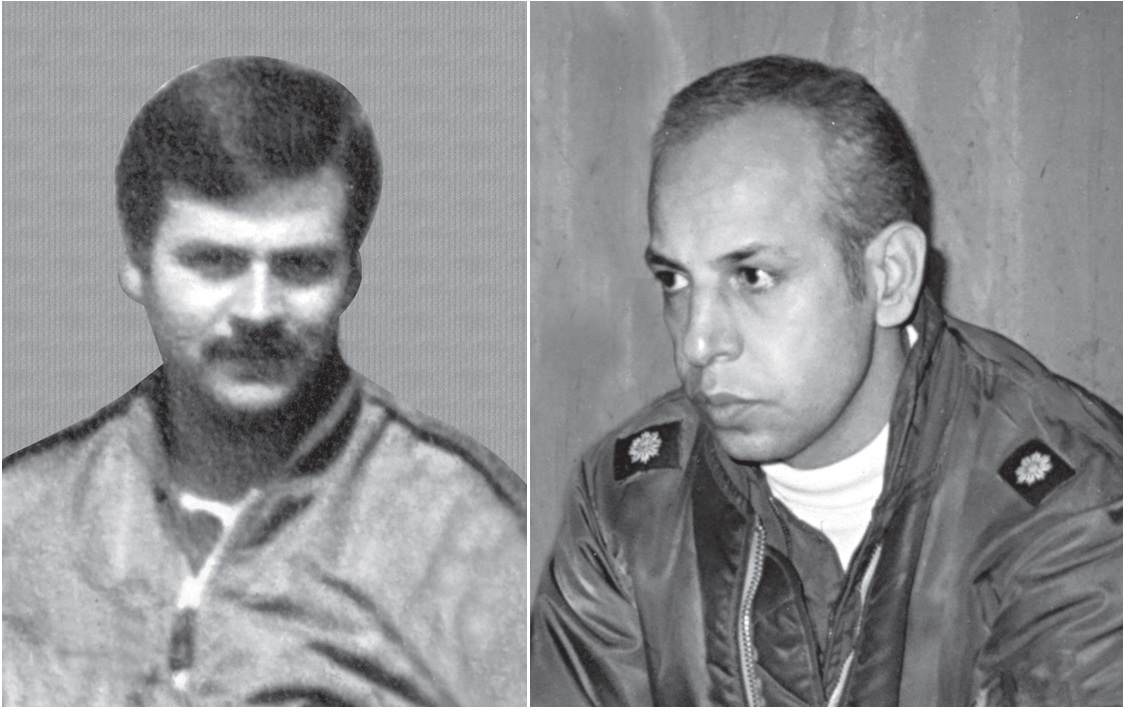
Second Brigadier General Mohammad Reza Ataee and Hassan Sedqi (pilot of rear cabin).
To be continued…
[1]. Harness is equipment by which pilots can connect parachute, first aid box, oxygen tubes, and so on to themselves by its locks.
[2]. On March 29 1982, in a two-aircraft mission with F-5E, First Lt. Hamid QazaAani had an accident and martyred in position number 2 above the Lake Uremia. God bless his soul.
[3]. On June 3rd 1984, Captain Hassan Husseinzadeh had an accident and martyred during a flight mission near the city of Tabriz. God bless his soul.
[4]. Phoenix missile (AIM-54)
[5]. At this time, Capt. Abbas Babaei was of the strong pilots of base. According to his colleagues, he was the first pilot in Iran who did the night refueling flight with F-14, and allowed the air cover flights at night is done in long duration and less sortie.
[6]. On August 11, 1984, Mohammad Hashem Alagha had an accident and martyred in flight operation over the azure waters of Persian Gulf. God bless him.
Number of Visits: 8238








The latest
Most visited
A section of the memories of a freed Iranian prisoner; Mohsen Bakhshi
Programs of New Year HolidaysWithout blooming, without flowers, without greenery and without a table for Haft-sin , another spring has been arrived. Spring came to the camp without bringing freshness and the first days of New Year began in this camp. We were unaware of the plans that old friends had in this camp when Eid (New Year) came.
Attack on Halabcheh narrated
With wet saliva, we are having the lunch which that loving Isfahani man gave us from the back of his van when he said goodbye in the city entrance. Adaspolo [lentils with rice] with yoghurt! We were just started having it when the plane dives, we go down and shelter behind the runnel, and a few moments later, when the plane raises up, we also raise our heads, and while eating, we see the high sides ...The Arab People Committee
Another event that happened in Khuzestan Province and I followed up was the Arab People Committee. One day, we were informed that the Arabs had set up a committee special for themselves. At that time, I had less information about the Arab People , but knew well that dividing the people into Arab and non-Arab was a harmful measure.Kak-e Khak
The book “Kak-e Khak” is the narration of Mohammad Reza Ahmadi (Haj Habib), a commander in Kurdistan fronts. It has been published by Sarv-e Sorkh Publications in 500 copies in spring of 1400 (2022) and in 574 pages. Fatemeh Ghanbari has edited the book and the interview was conducted with the cooperation of Hossein Zahmatkesh.

